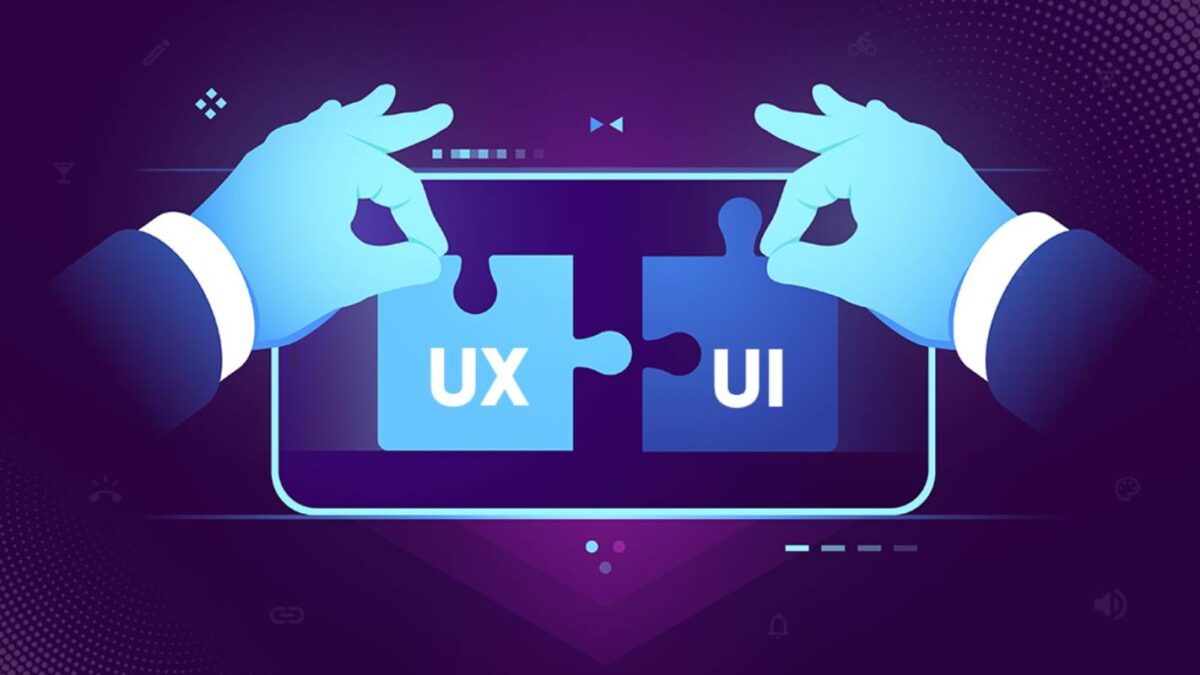Few topics have been treated as much concerning UX as this “famous” UX / UI difference!
In ergonomic interface design, we often talk about UX for the user experience and UI, the acronym for user interface, for graphic design. Sometimes these two concepts specific to UX Design and its fields merge, even though they represent two specific and, therefore, different disciplines. And if, however, UX is a complete design process and includes UI, these two terms do not equate to each other. Neither from a theoretical point of view nor a practical point of view. Let’s try to differentiate between UX and UI to reveal their relations of reciprocity and complementarity.
Table of Contents
ToggleThe significant differences between UX and UI Design
They are two different disciplines, given that they do not have the same object of study.
UX is not UI
UX Design refers to how users feel when using a web interface, a mobile application, or interactive software. Deepen this point with the definition of UX. The expert responsible for this study is called UX Designer. Therefore, its task is to optimize and improve the user experience (UX) from tests carried out on the various possible user journeys. The results obtained allow him to design a user experience as pleasant as possible and facilitate users in their search for information. Here is the best UI UX design agency you can check for more information.
What is UX Design?
UX Design is therefore defined as all the means implemented to design an interface that fully meets the usability needs of each user. The goal is to provide the best possible user experience.
UX design applied to a website, defining a good user experience is:
- Make it accessible and easy to use thanks to its ergonomics, appearance, consistent innovation, and intuitive features
- Make it credible through its reassuring use
- And, Make it compatible, i.e., usable by users regardless of the digital medium (smartphone, tablet, large screens, etc.)
What is UI?
With the UI, the user interface, we enter the register of information technology and, more specifically, in the design of the man-machine interface (HMI). Its goal is to improve the interaction of a user with the interface. THEREFORE, the UI designer is the person in charge of creating a pleasant and helpful interface for users. According to the rules and methods dedicated to interface ergonomics, he designs and positions the various graphic and textual elements of a web interface. Its objectives are to facilitate the navigation of Internet users by offering them intuitive, valuable, and practical ergonomic features.
For more information: it is possible to classify the user experience with six main stages corresponding to a multitude of settings UI designer must consider in its UX design process of interface
- Visibility: need to optimize referencing upstream of the design project
- Accessibility: create a site compatible with all the different technical supports and mobile and touch terminals
- Attractiveness: choose a design consistent with pleasant, helpful, intuitive, and practical ergonomics
- Ease: ergonomics must facilitate the search for information
- Credibility: a showcase of the brand, the site must reassure and convince Internet users
- Efficiency: Internet users should quickly and easily find the answers to their questions
UX / UI: How does it Work?
The UX designer, therefore, begins to work well before the rest of the team. 5 steps must be followed:
- Defining a strategy: this is where you start thinking about users, what they are looking for, why they are coming to your site or your application.
- List of needs: and above all definition of what it is possible to do or not.
- Definition of the structure: we prepare the plans and try to put ourselves in the user’s shoes.
- Creation of the first diagrams: it is here that the drawing of the wireframes intervenes in the sketch.
- Creation of the visual: this is when the UI designer begins his work to harmonize the decisions made by the UX designer with a more technical side than his partner.
Although sometimes confused, the division of tasks between UX designer and UI designer is relatively straightforward. However, the UI must take into account certain aspects of the UX in its work:
Why is UX Design an Advantage?
The positivity of the experience represents the reason why a person chooses one product or service over another. Those who invest in UX design will obtain a long-term competitive advantage as it allows to increase the time spent on the website, conversions, and loyalty towards the brand, reduce complaints and, consequently, requests for technical assistance on products or services. . In other words, it improves customer satisfaction.
It’s not magic, and it’s User Experience Design!
A solid design phase with the user at the center and supported by meticulous UX care involves:
a practical and solid design because it is based on data obtained from the comparison with real users;
a content strategy focused on the real needs of the user, taking into account his characteristics and how he uses them;
The identification of the moments in which a user relates to the site to design the initial approach, the interaction, and the results of this use, in a way that is consistent with an overall positive experience.
To satisfy these aspects, however, it is necessary to fully understand the methods and tools of UXD, a multidisciplinary approach that during the process requires the intervention of different figures and skills.
You can enhance your design skills by taking online courses from Uxcel that give out UX certification after completion, which is an added advantage for a UX designer to add to his portfolio.
The latter range from behavioral research, such as direct interviews and user tests, to user-centered design, with tools such as personas, to use scenarios and the customer journey.
The UX designer often goes as far as the preliminary design of the site, making sketches or prototypes and studying the interactions. However, the graphics of the interface of a website (or service) are only the final part of the user experience design. Due to its intrinsic characteristics, UX Design blends several phases: concept design and prototyping, content mapping, information architecture (AI), frameworks, navigation flows, User Research (i.e., requirements analysis), and data validation through user tests. As previously mentioned, the approach is holistic because these phases have a circular trend. Each one can be reviewed and adapted.
Also Read: How Does A Wireless Thermostat Help You Save Money?
Related posts
Hot Topics
Mobile Threat Defense: The Silent Shield Behind Every Secure App
Mobile apps are found everywhere in India’s rapidly developing digital landscape—from banking and online shopping to healthcare and learning. And…
How to Get Started with Crypto Trading: A Complete Beginner’s Guide
I was completely shocked when I began trading in cryptocurrency. I was there, seeing numbers arranged like an abstract painting,…



